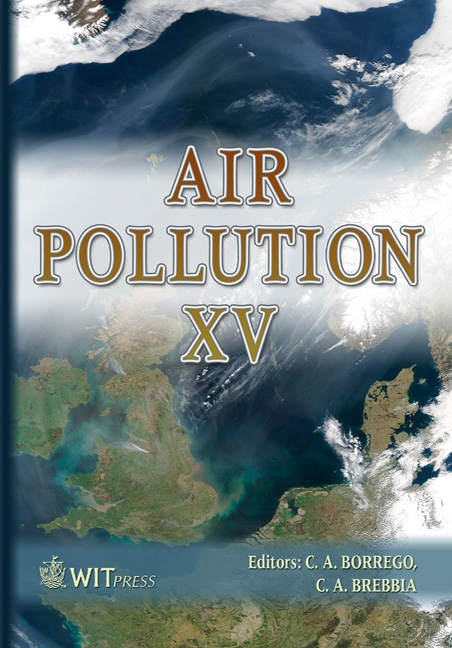Evaluating Ozone Spatial Distribution In Portugal Using Passive Samplers
Price
Free (open access)
Transaction
Volume
101
Pages
10
Published
2007
Size
1,413 kb
Paper DOI
10.2495/AIR070041
Copyright
WIT Press
Author(s)
J. Monjardino, S. Mesquita, H. Tente, F. Ferreira, P. Gomes & N. Franco
Abstract
Tropospheric ozone is a pollutant of major concern in Portugal and in Europe, especially during summer and spring time. In Portugal, several studies and the analysis of air quality data series highlighted high ozone (O3) levels inland. A study was carried out to assess the rural background stations representativeness area for O3. Monitoring campaigns were performed in the summer of 2005 within five Portuguese air quality management zones where critical levels are usually reached. O3 passive samplers (148 diffusive tubes, one-week exposure) as well as a mobile monitoring station were used. In relation to spatial O3 patterns, the studied air quality stations appear to be representative of the majority of their zones. Regarding the temporal representativeness, a trend was found for higher hourly O3 correlations between sites located both on a coastal territory axis and on an inland territory axis. Thus, it seems that similar geographical, topographical and meteorological conditions are a more significant factor to define the stations area of representativeness, rather then the proximity between locations. Keywords: ozone, representativeness, air quality monitoring stations, diffusive sampling. 1 Introduction Ozone (O3) is a secondary pollutant formed in the atmosphere as a result of reactions between primary pollutants (ozone precursors), such as, nitrogen oxides (NOx) and volatile organic compounds (VOC), emitted largely by industry and road traffic. Besides the O3 formation processes there are also
Keywords
ozone, representativeness, air quality monitoring stations, diffusive sampling.





